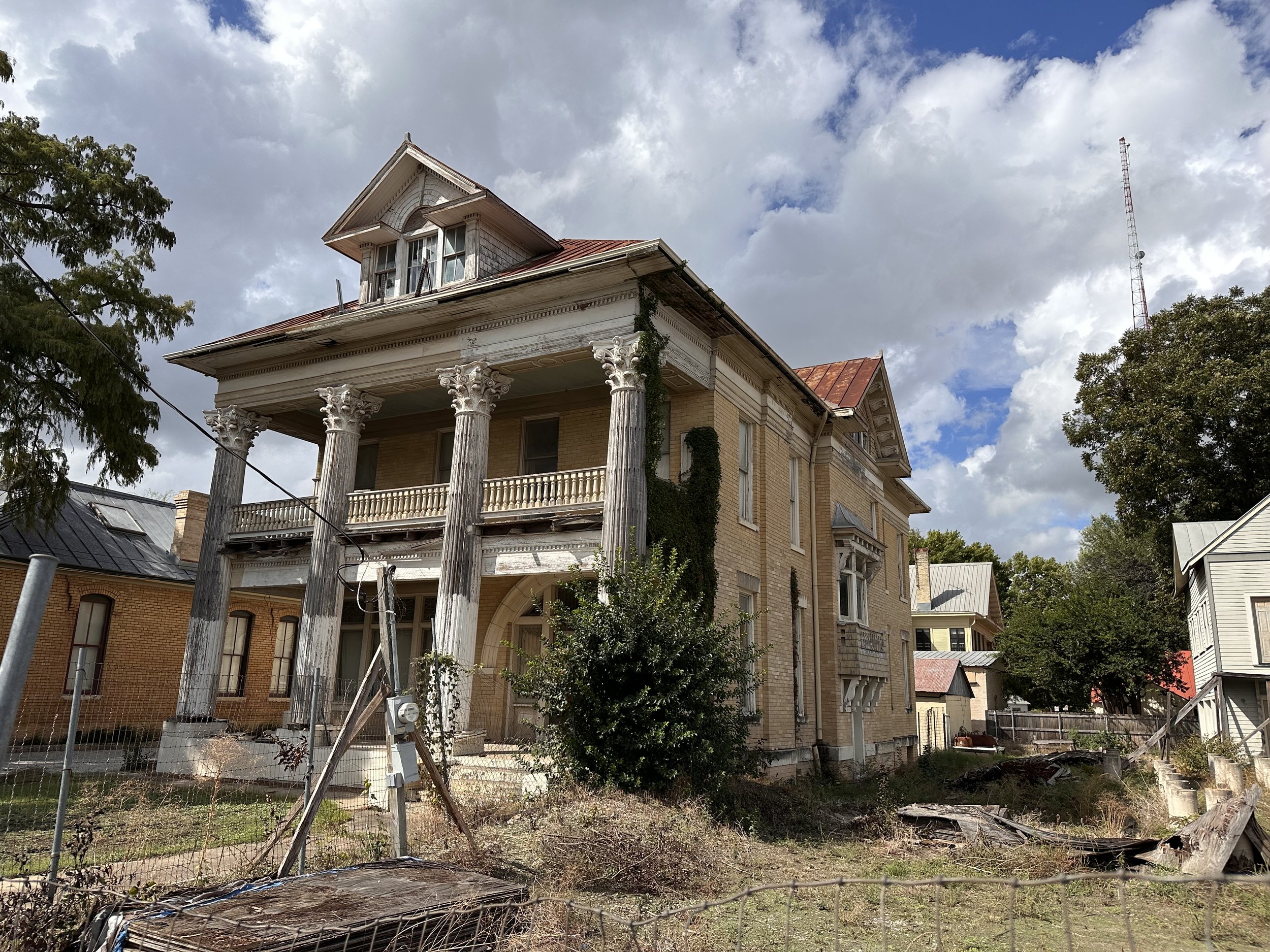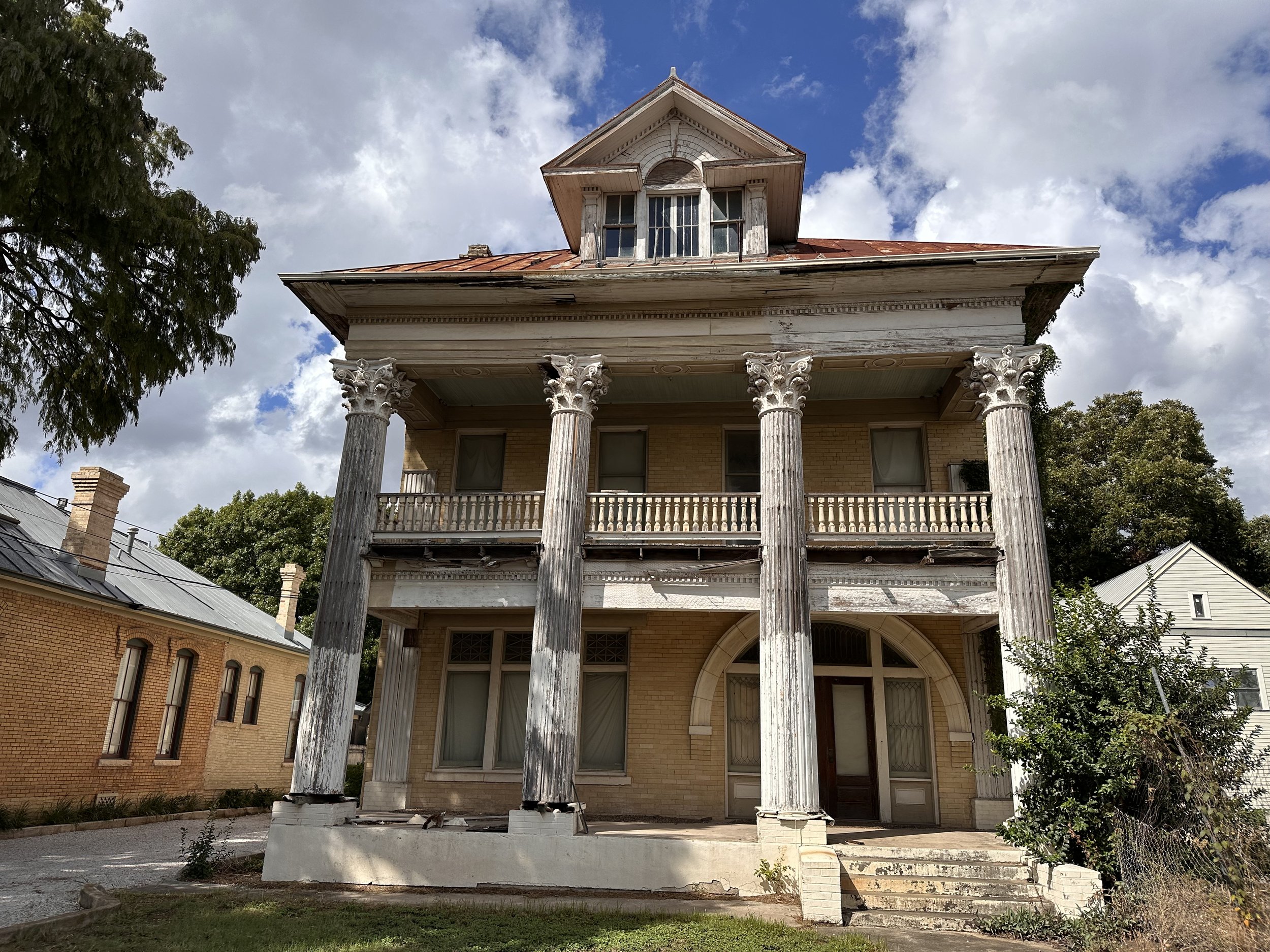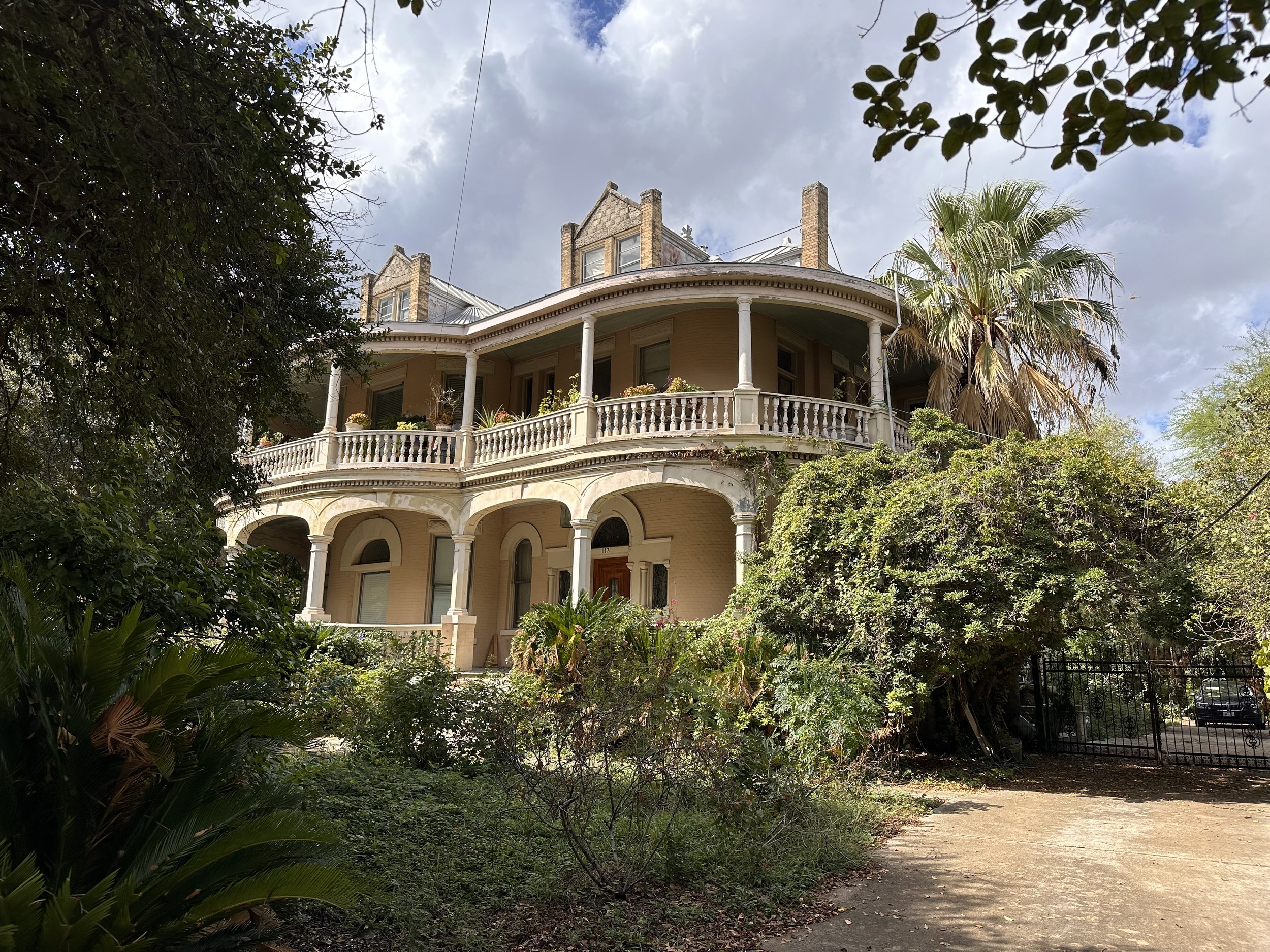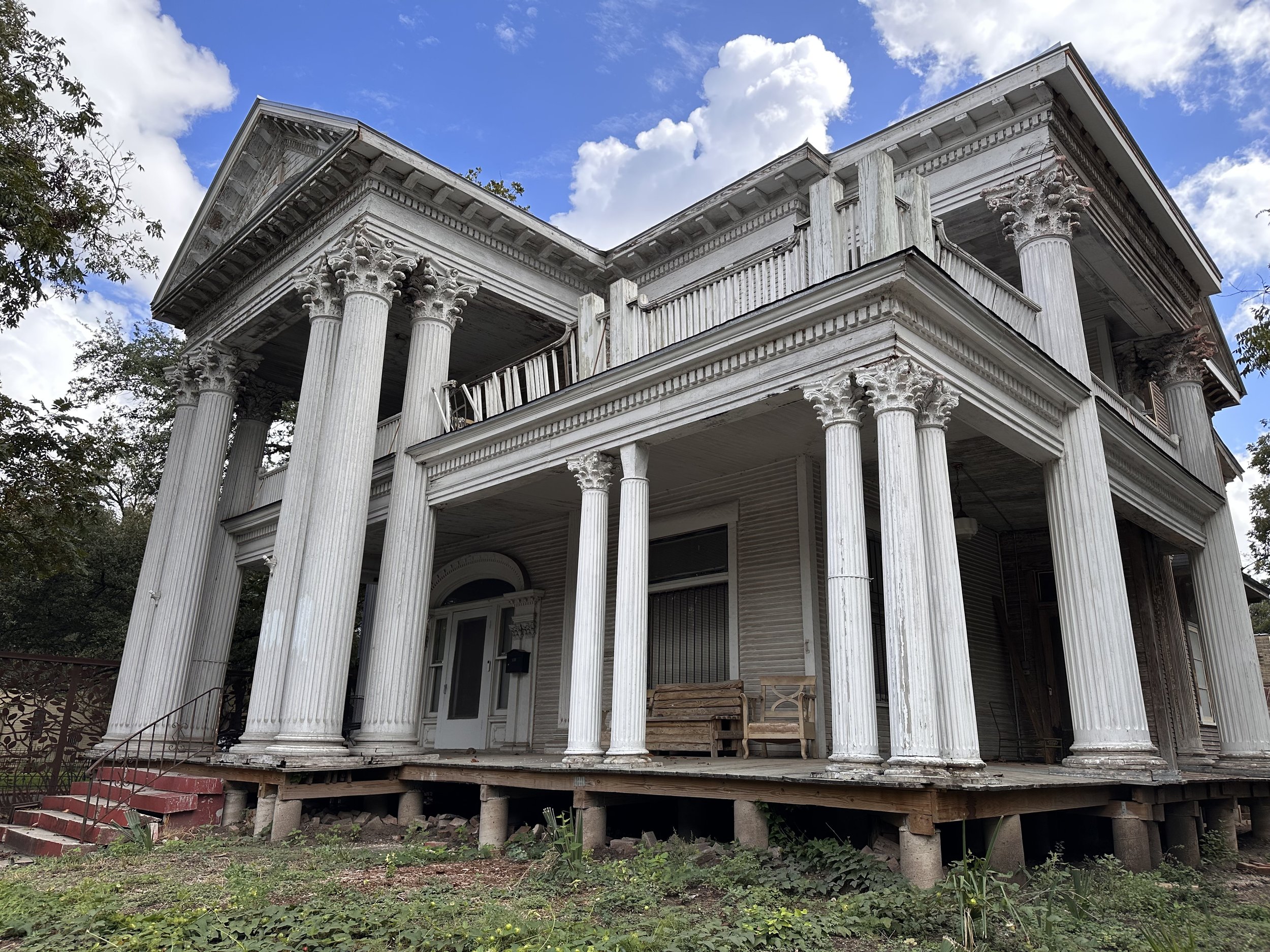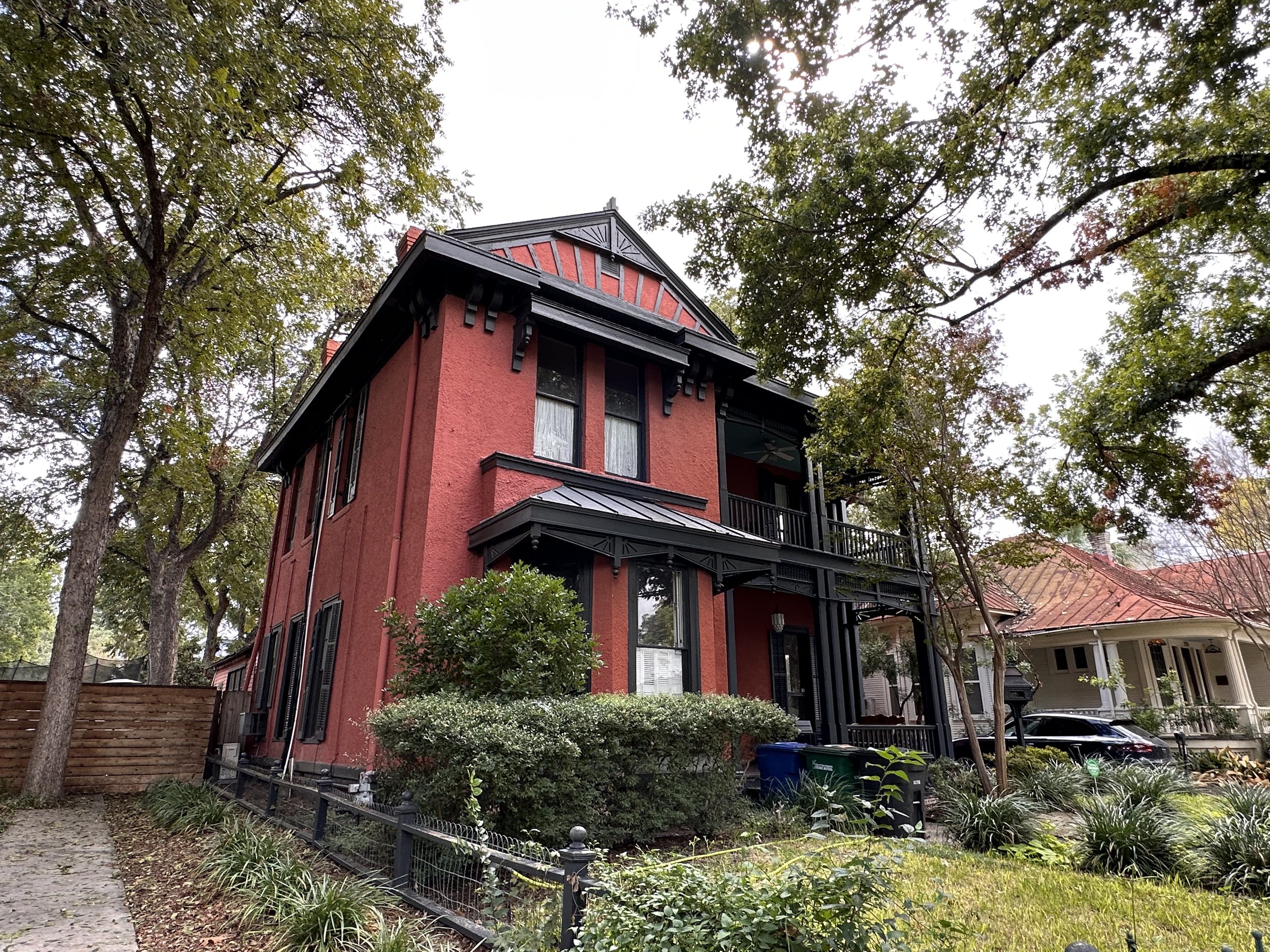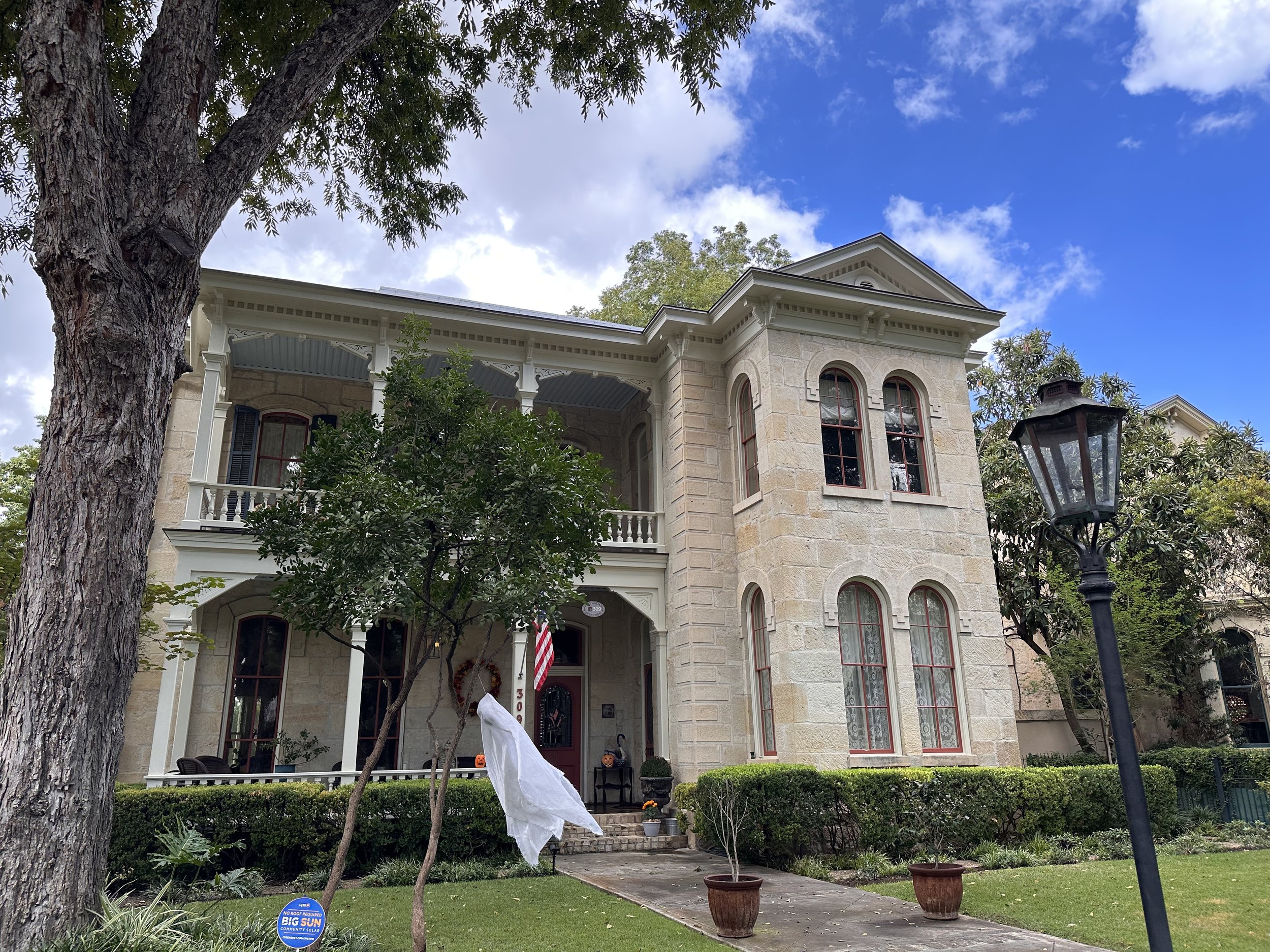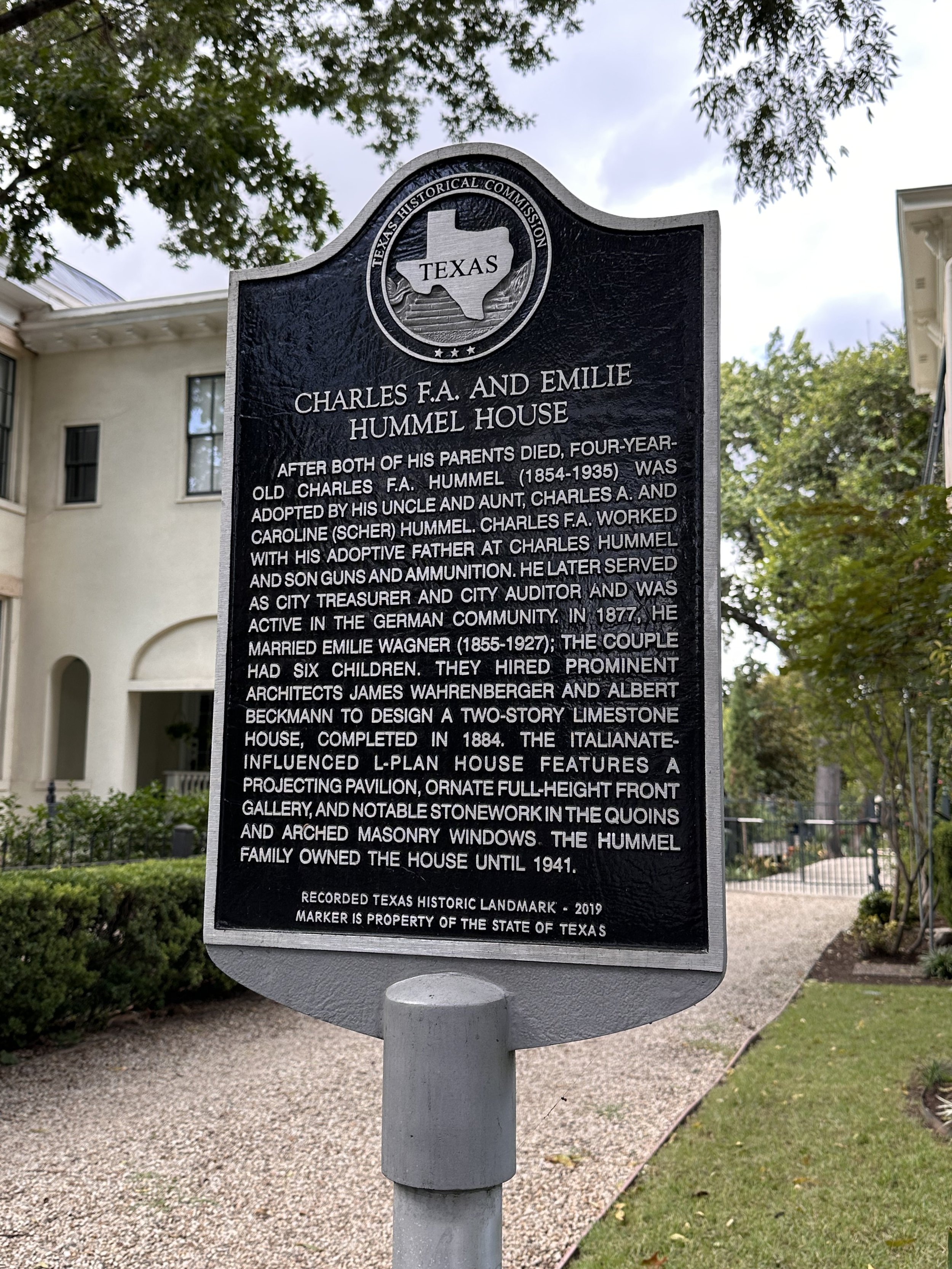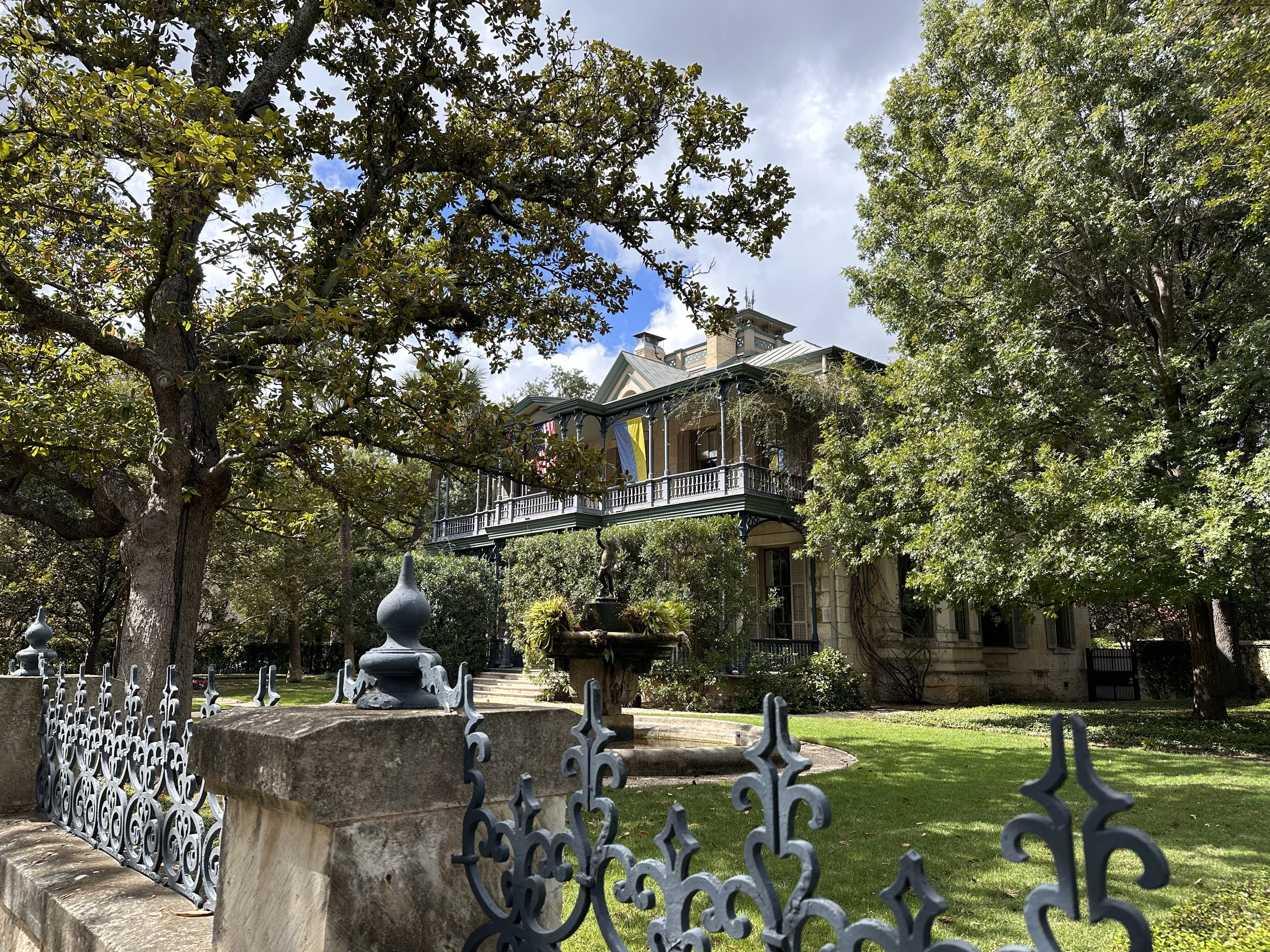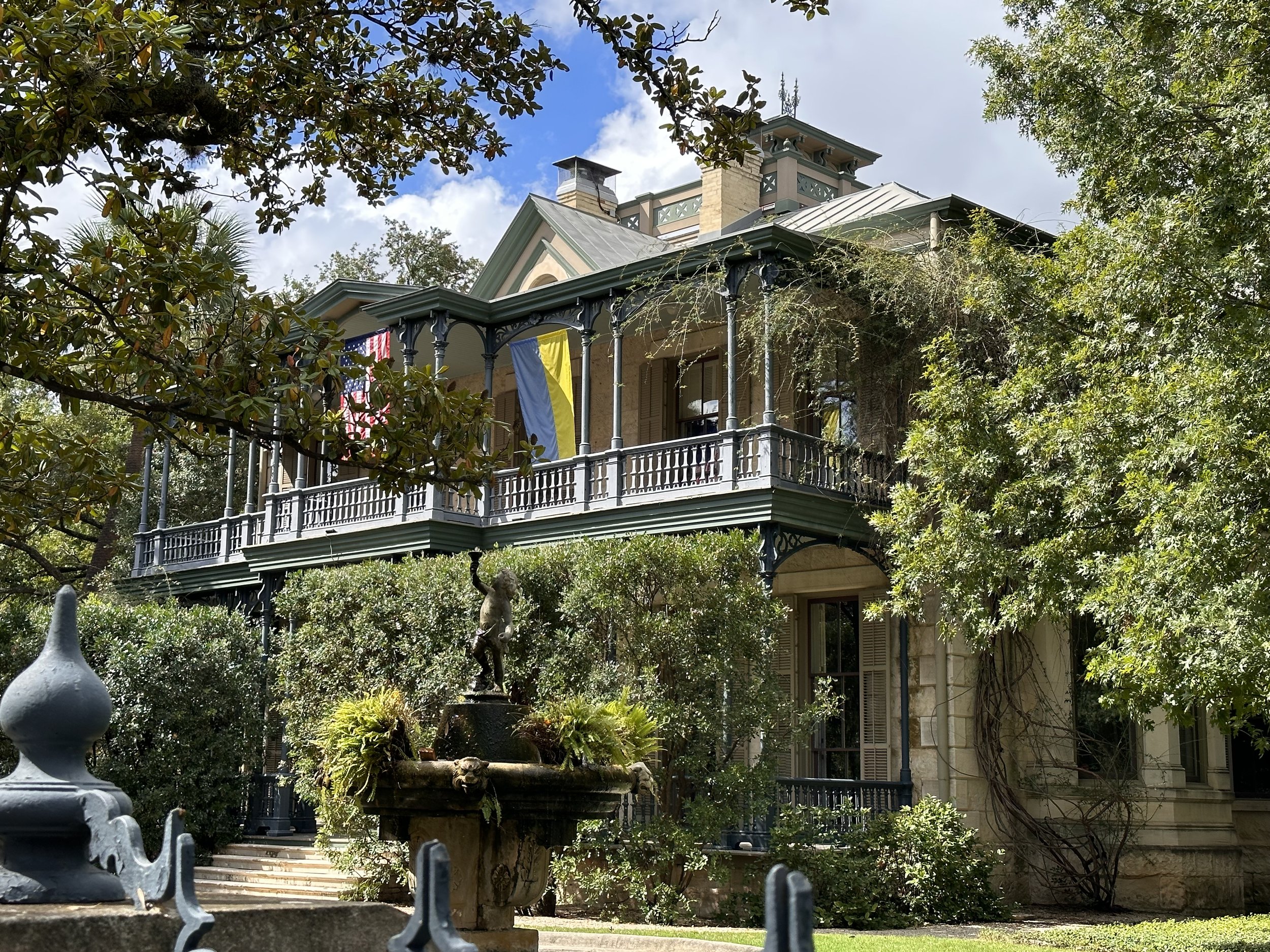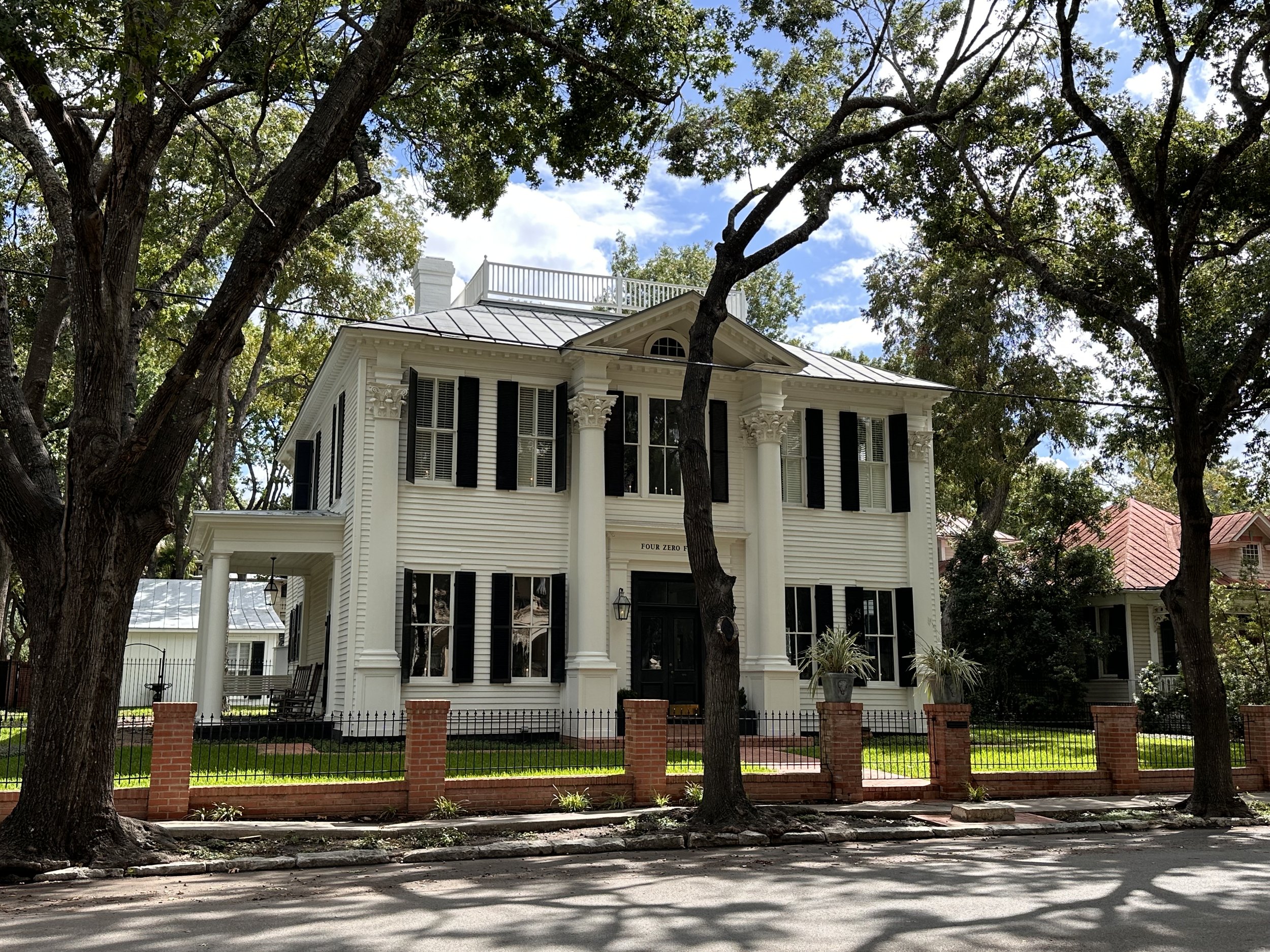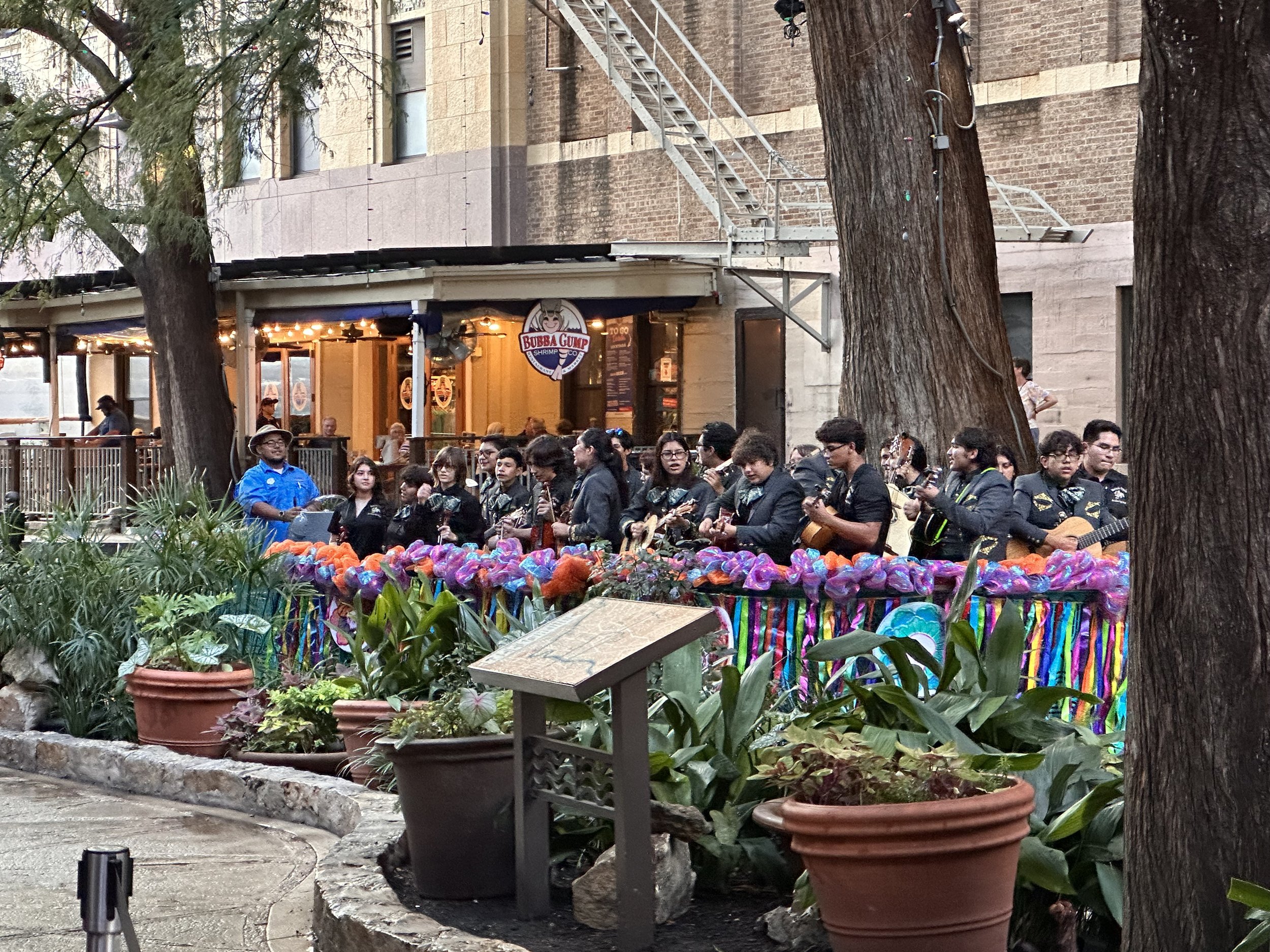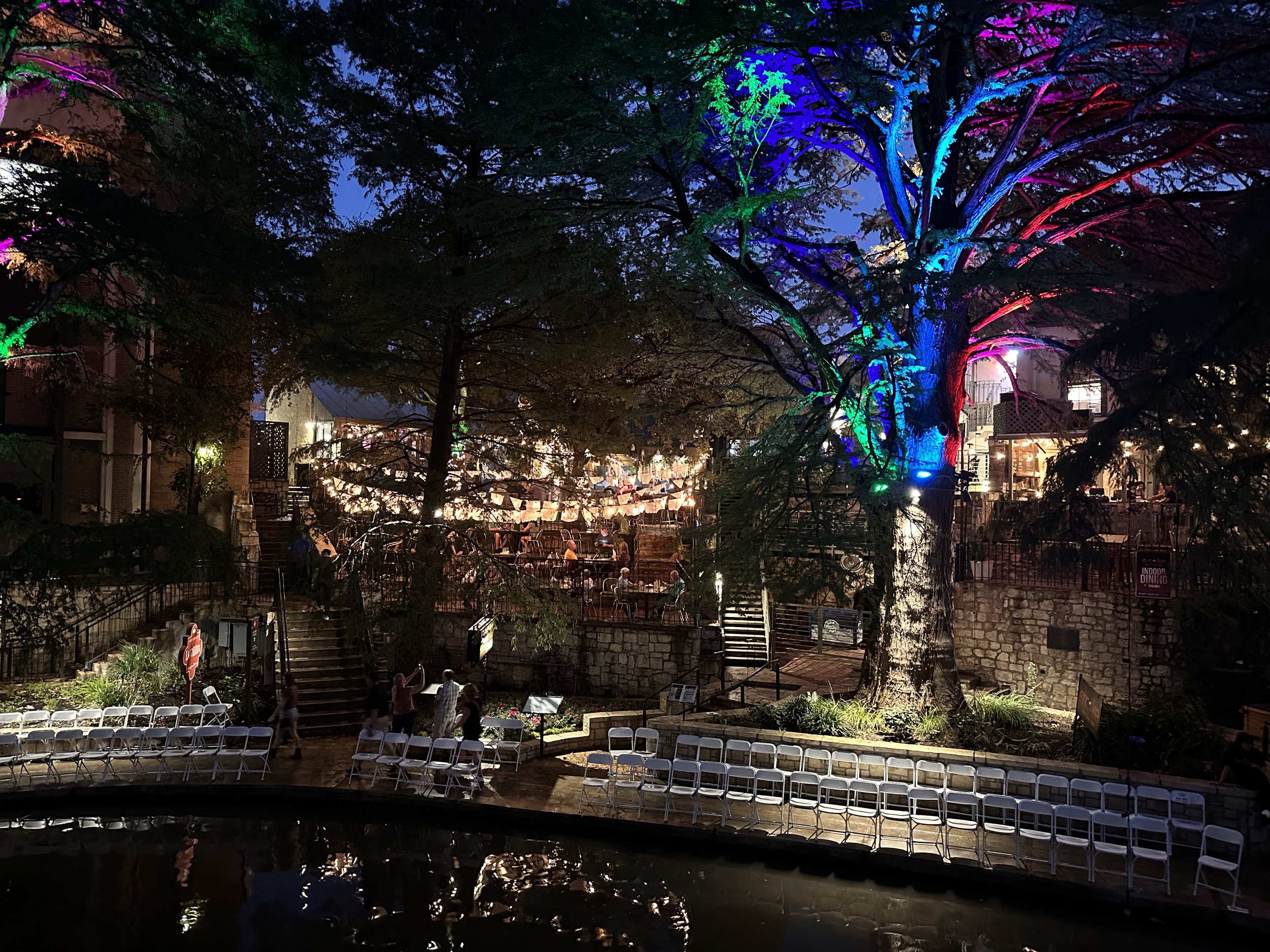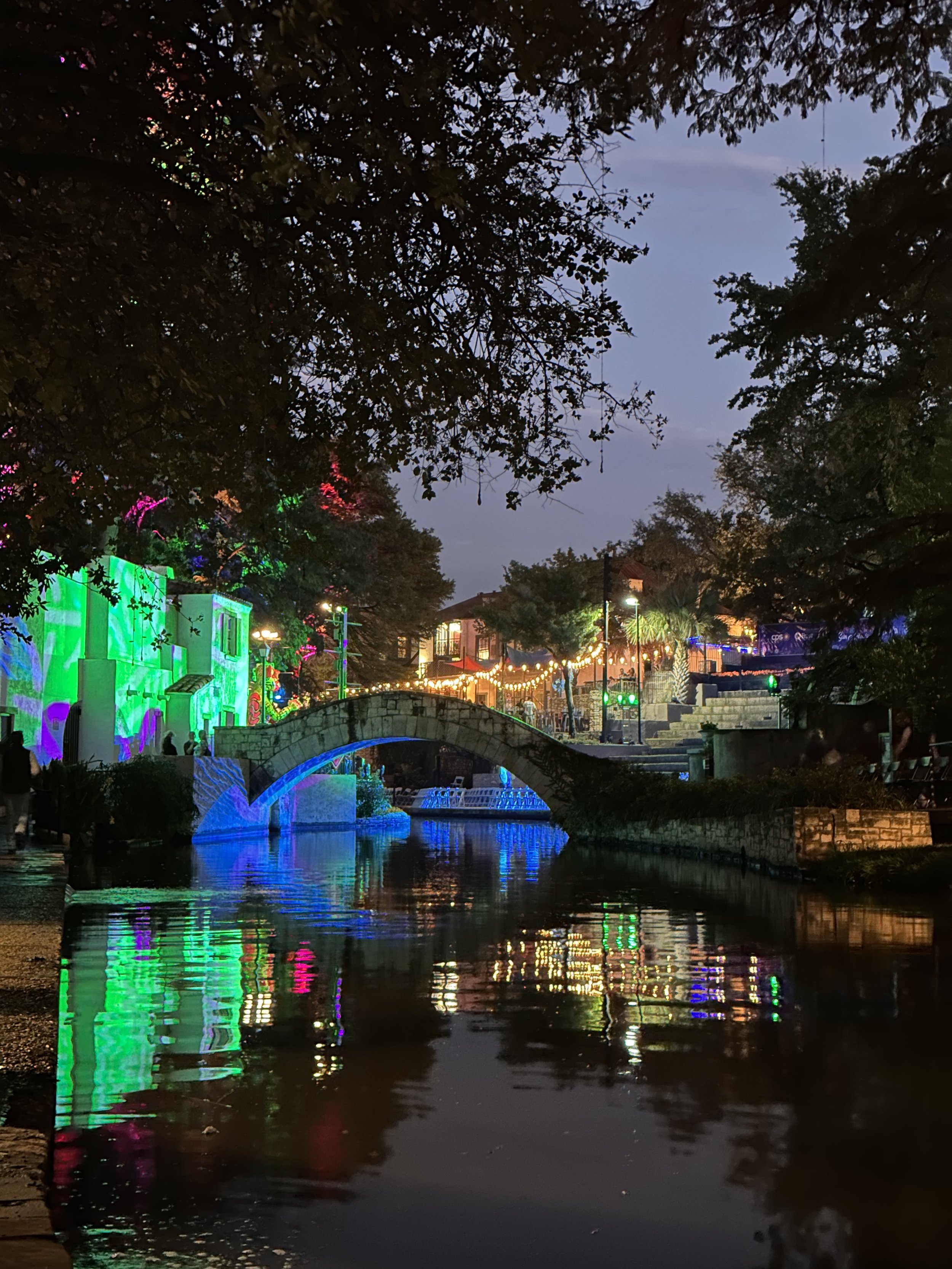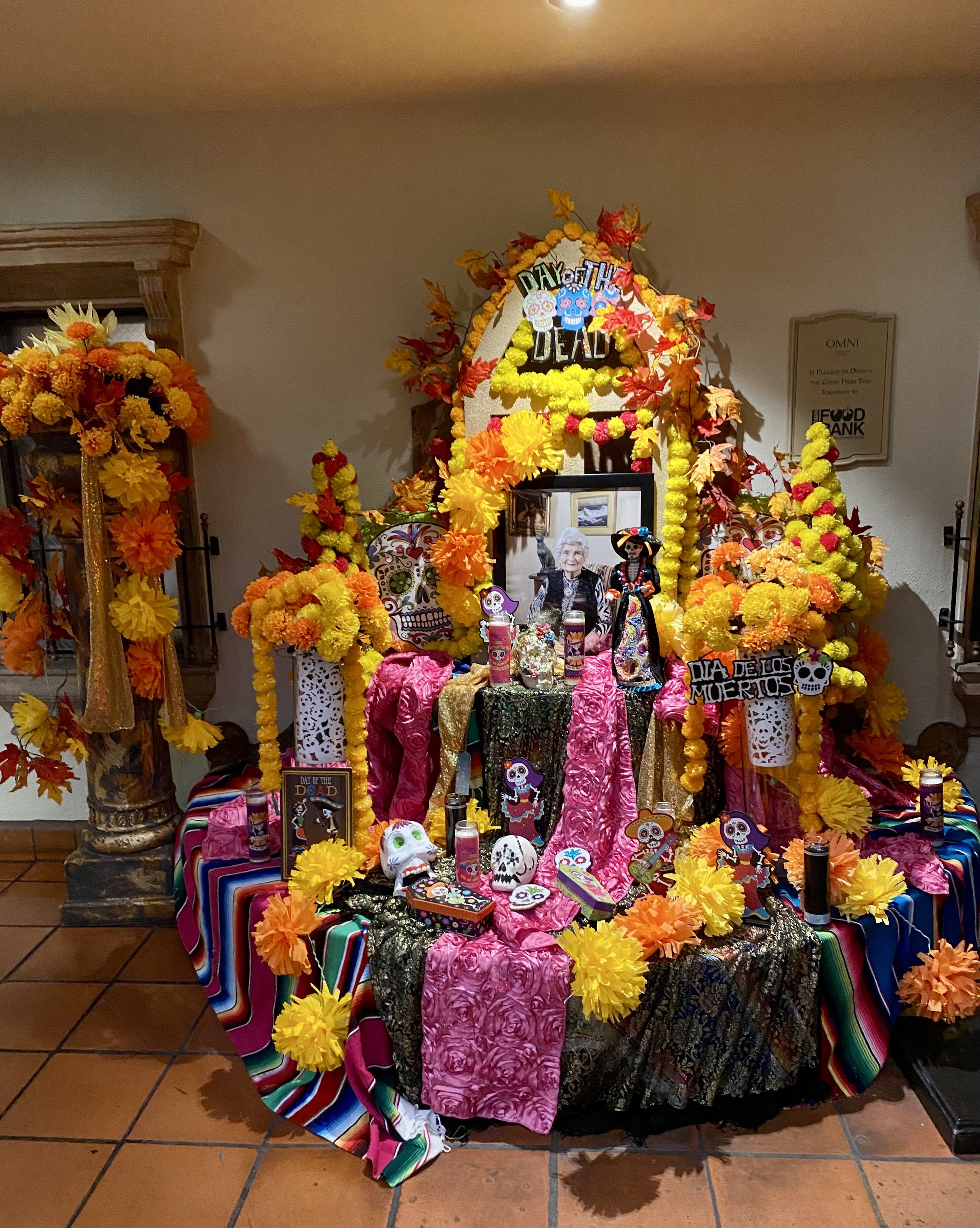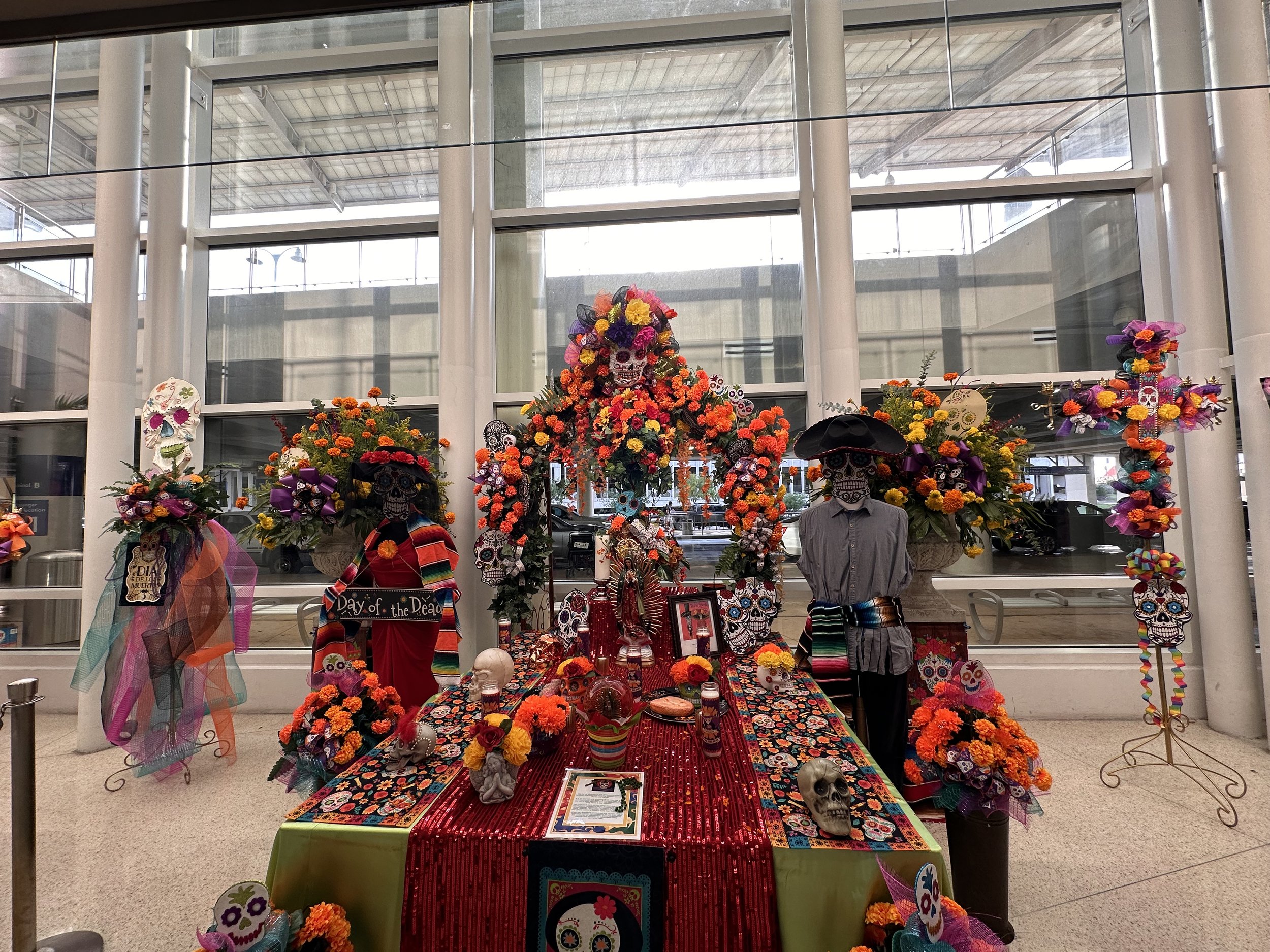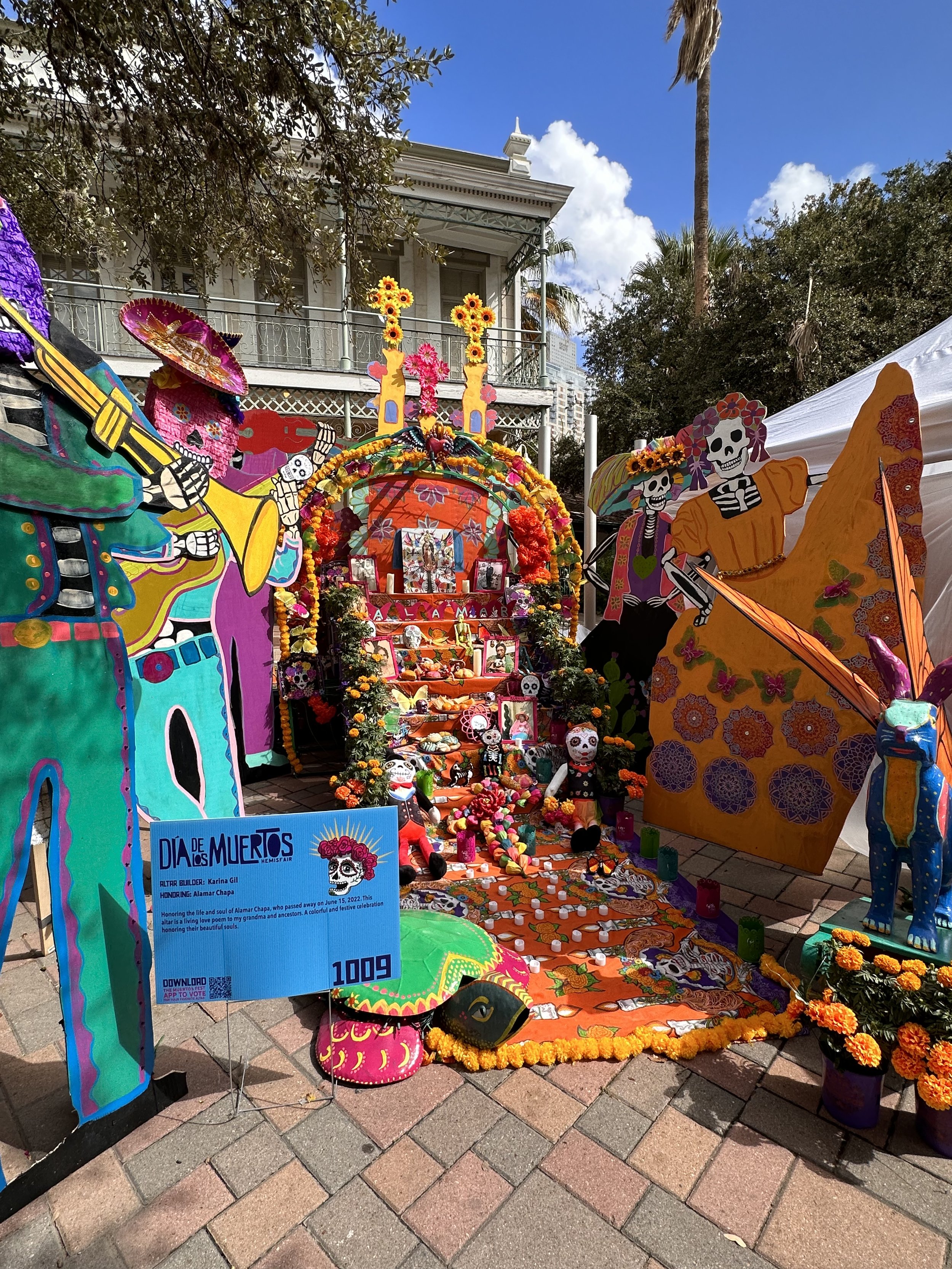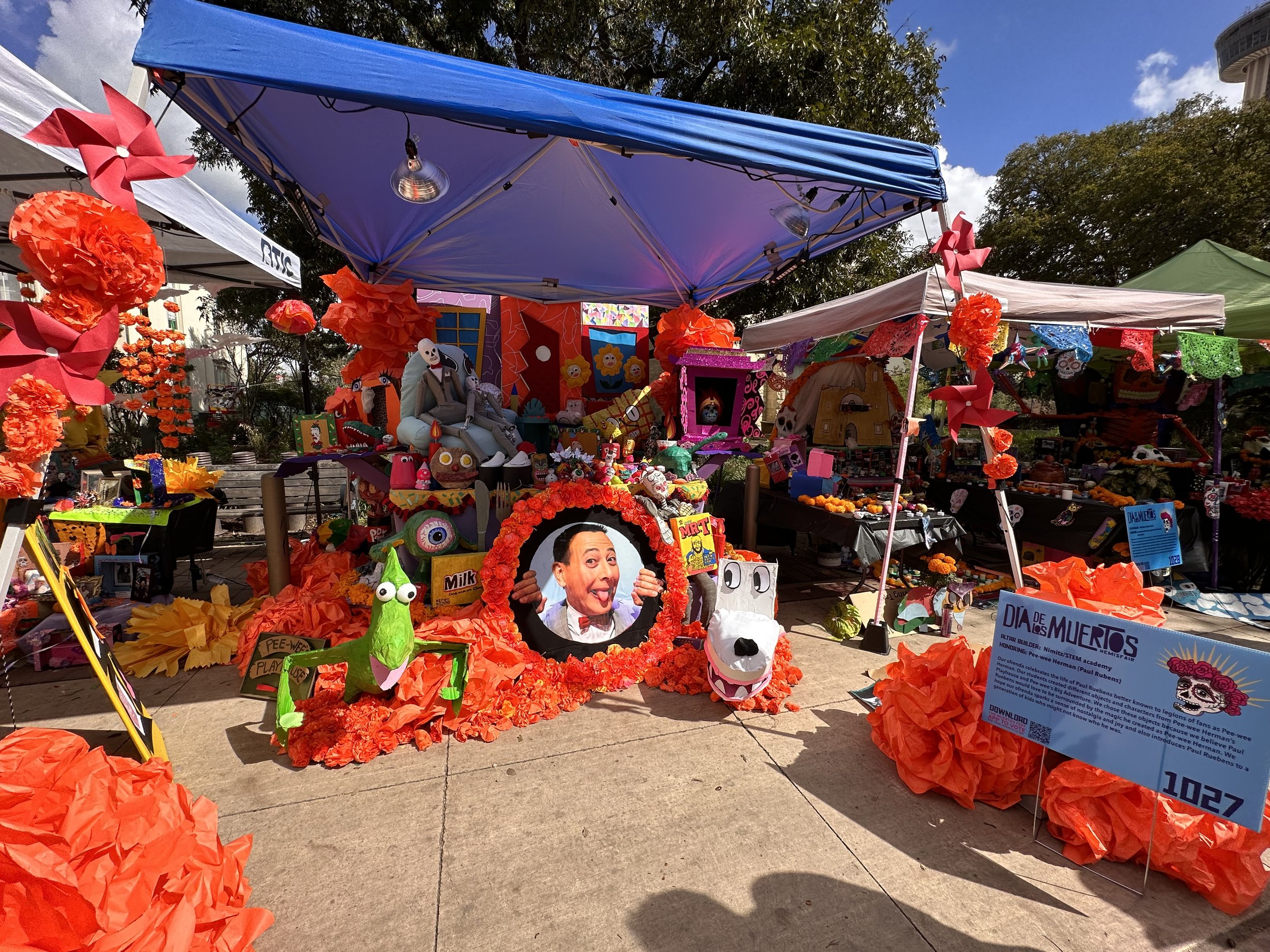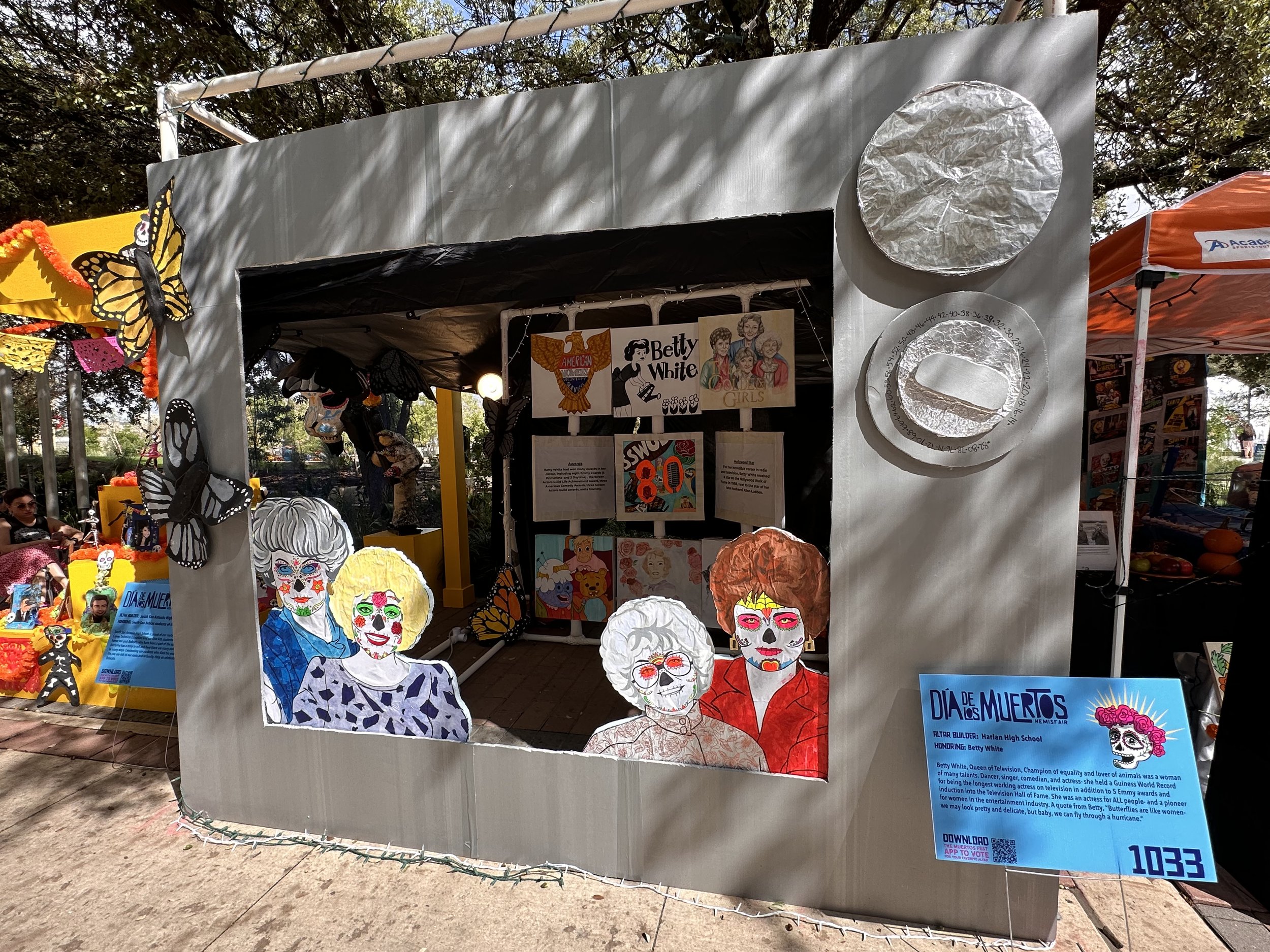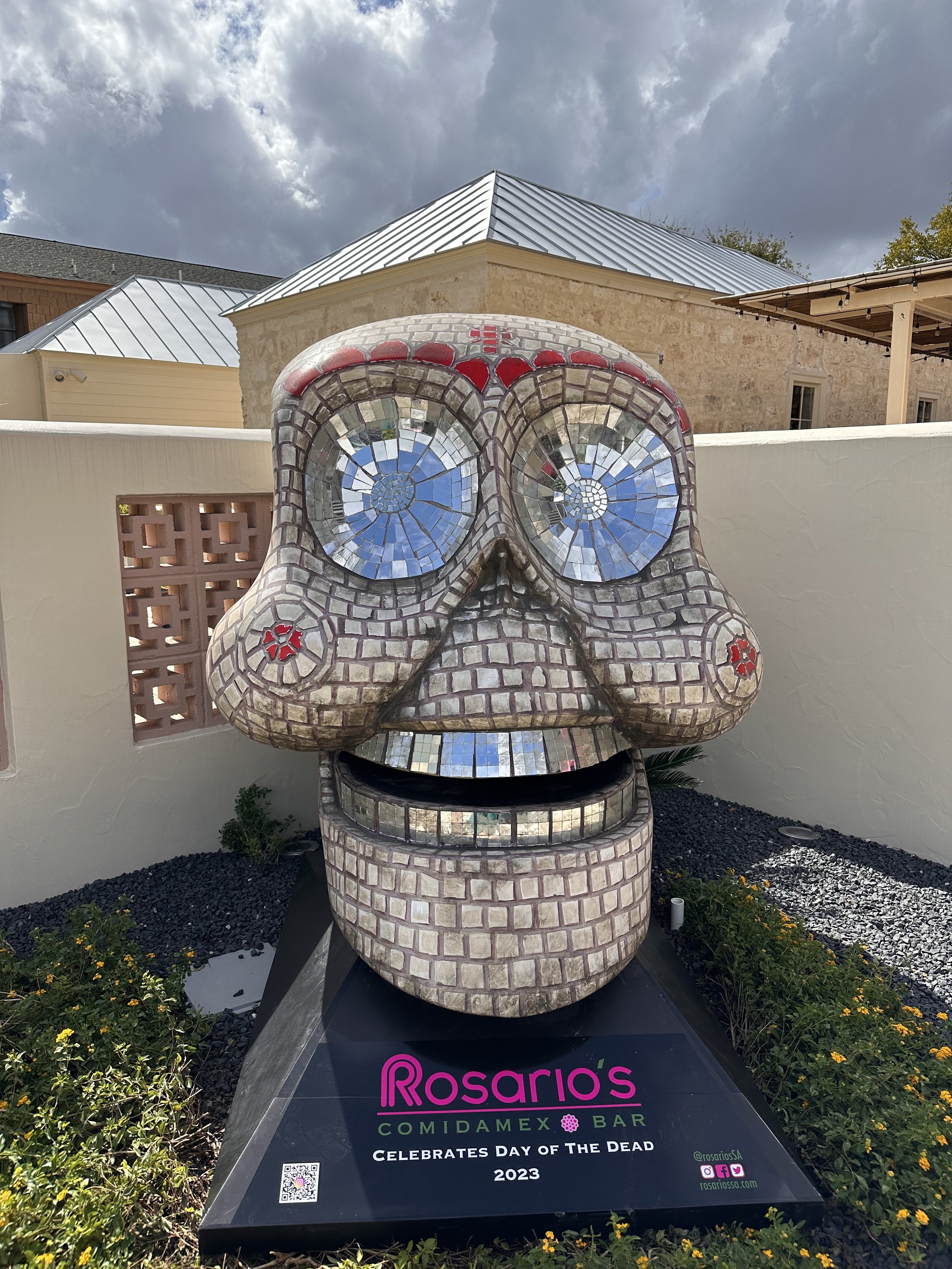Exploring San Antonio, TX
Blackbeard’s birthday is in late October, just in time for fall air and Halloween experiences galore! This year, we headed to San Antonio, TX to not only celebrate his birthday, but also experience Dia de Los Muertos (Day of the Dead) - a huge tradition in the Mexican culture. Out of all of the times I’ve been to this town, this time was my favorite.
The below information is a complete guide of the best places to stay, the top rated places to dine and drink, and all there is to see and do. We’ve also included a summary of the history of this Spanish city!
Time needed in this city: 2 nights
Where to stay
Omni La Mansión del Rio
We stayed at the Omni La Mansión del Rio, which was absolutely fantastic and full of history. We suggest upgrading to a balcony suite with river view so you have your own personal Riverwalk experience when it gets too crowded.
other recommendations
Where to dine & Drink
A Way to the Heart (top-rated)
Nine-course, seasonal tasting menus.
Amor Eterno (speakeasy)
No information available - it’s that secret :)
Battalion
Stylish spot for classic Italian plates & cocktails served in a historic, restored firehouse.
Bar 1919
Swanky speakeasy-style spot where hipster bartenders mix classic cocktails & also serve charcuterie.
Biga
Chic River Walk eatery with adventurous New American fare, worldly wines & an ever-changing menu.
Bliss
Inspired New American fare, charcuterie, wine & beer in a stylishly restored former filling station.
Bohanan's Prime Steaks and Seafood
Chic eatery serving American fare in an old-world setting with a cocktail lounge, patio & live jazz.
Domingo
Traditional fare offered in a stylish, riverside locale with a spacious terrace.
Four Brothers
A vibrant dining space serving modern South Texas cuisine with a touch of Latin and French Fusion.
Mixtli
Innovative modern restaurant presenting changing regional Mexican tasting menus with drink pairings.
NONNA Osteria
Breezy restaurant offering rustic Northern Italian cuisine & wine inside The Fairmount Hotel.
Paesanos Riverwalk
Upscale destination with traditional & contemporary Italian fare, a long wine list & outdoor dining.
Pharm Table
Charming, cozy restaurant serving market-fresh, health-conscious lunches with vegan & paleo options.
Rebelle
A swanky, stylish spot pairing New American meat & seafood dishes with inventive cocktails.
Savor The Culinary Institute of America
Located on the campus of the Culinary Institute of America, and nestled in the Pearl, Savor provides a unique dining experience that highlights the talents of their CIA students under the supervision of the college’s world-class faculty.
SILO Prime
Silo Prime, helmed by Chef Gary Boatman, is the leather and whiskey cool “older uncle” to NONNA Osteria. You walk through the same door to get to both establishments, but they quickly diverge down separate hallways into distinctly unique personalities. The steakhouse has moodier lighting, darker furnishings, quieter environs, all the better to lose one’s gaze in the sky-high flames leaping from a shiny steel grill anchoring the kitchen.
Sweet Yams
Small, unfussy café offering a healthy menu with organic, gluten-free & vegan options, plus takeout.
The Bunker Mixology (speakeasy)
Located near the Majestic Theatre, the downstairs speakeasy blends the old and the new with classic art pieces in one room and NFTS in the other.
The Guenther House
Art nouveau home at Pioneer Flour Mills with homey American & Tex-Mex fare, brunch & outdoor dining.
The Magpie
A tiny, eponymous free-style kitchen, serving eclectic, seasonal dishes.
The RD Speakeasy
You will need to book a reservation to secure a password, by texting 210-605-2292 or click here.
Things to see & Do
historical tours
Alamo
In 1718, the Alamo began being constructed as a place of worship and community. 118 years later, in 1836, the Alamo became known as the fortress for one of the gruesomest battles to exist in Texas.
On February 23, 1836, a Mexican force numbering in the thousands,led by General Antonio Lopez de Santa Anna, began a siege of the fort. Though vastly outnumbered, the Alamo’s 200 defenders–commanded by James Bowie and William Travis and including the famed frontiersman, Davy Crockett, held out for 13 days before the Mexican forces finally overpowered them.
For Texans, the Battle of the Alamo became an enduring symbol of their resistance to oppression and their struggle for independence, which they won later that year. The battle cry of “remember the Alamo” later became popular during the Mexican-American War of 1846-1848.
Alamo Line in the Sand
Usually overlooked by the front entrance, is a literal line that commemorates Colonel William Travis, commander of the Alamo defense forces, he drew with his sword. He was told to to surrender, by the enemy commander, or else his entire force would be killed. Knowing this, he gathered his men, took out his sword, and drew a line in the dirt. He asked his men to choose their fate: surrender and leave the Alamo, or cross the line and join him in defending the compound to the death, no turning back. According to the tale, all but one of the Texas Heroes joined Travis on the other side of the dirt line.
Phil Collin’s Collection
In the summer of 2014, Collins donated his priceless collection of hundreds of Alamo and Texana artifacts to the Texas General Land Office, guardian of the Alamo on behalf of the people of Texas.
Collins built the collection over several decades, purchasing some items and even discovering some others just steps away from the Alamo itself.
Collins fell in love with the Alamo’s inspiring story as a 5-year-old boy, when he saw the Disney production of Davy Crockett, King of the Wild Frontier. When other children were out playing cops and robbers or other childhood games, Collins says that he was re-enacting the Battle of the Alamo.
His collection is now on display at the Alamo Exhibit in the Ralston Family Collections Center at the Alamo.
Buckhorn Saloon and Museum
Albert Friedrich was just a 17-year-old bellhop in 1881 when he purchased the building across the street from the hotel he worked at and opened a saloon. In what could have been an ill-advised business move, he began accepting antlers, horns, pelts, and other game trophies as payment for drinks. From then on, the Buckhorn collection grew to become one of the world's most unique and largest collections of horns and antlers.
Albert’s wife, Emilie, got into the family business as well. She began to accept jars of rattlesnake rattles in exchange for a drink. She would use these to create works of art that can, to this day, be seen on display at the Buckhorn.
Theodore Roosevelt and his Rough Riders were reputed to frequent the establishment, and even plotted the Mexican Revolution, with Pancho Villa, there.
As you can see in the video, it’s hours of late 1800s curiosities around every corner, including the Buckhorn Museum, the Texas Rangers Museum, Carnival of Curiosities, and the American Sideshow. It’s an absolute must-do!
Castroville Hearse
In 1919, The Castroville Hearse was the only hearse in town. Of French design, hand-crafted and carved, the hearse was originally made in 1898 in Cincinnati. It was purchased and transported to Dallas, where it was used until being sold to Castroville for $650.
The hearse was designed to carry any size casket in the back. The driver of the hearse sat up front and received $5 per funeral and transportation (which equates to $70 today).
The hearse was used in Castroville until 1930, when an engine-powered hearse was acquired. The old hearse was eventually donated to the Institute of Texan Cultures in San Antonio.
Mission San Jose
In 1720, Mission San Jose was established by Fray Antonio Margil de Jesus. It supported over 300 inhabitants, quickly making it the largest Texas Mission. It’s inhabitants worked and lived there, and completed the complex in 1782. Although the mission stopped operating in 1824, it baptized over 2,000 Indians.
In 1941, Mission San Jose was declared a State Historic Site and also a National Historic Site. The restored gristmill is the oldest mill in the state of Texas.
Today, Mission San Jose is still an active parish and holds open mass on Sundays. It’s maintained by the National Park Service and has been so well preserved that it shows visitors how missions might have looked over 250 years ago.
Portland Cement Plant Ruins
In 1880, the Portland Cement Plant opened in San Antonio, becoming the first plant of its kind west of the Mississippi River. It was built to dig and process blue argillaceous limestone, which was believed to be a natural cement rock. The business grew throughout the 1880s until it became the Alamo Cement Company.
The cement processed on this spot helped build the Texas State Capitol building in Austin, as well as many other prominent structures around the state. By 1908, however, the resources at the site had already been depleted. The company changed places, abandoning the plant as it moved on to more lucrative grounds.
The giant smoke stack, which was built in 1889, still remains, along with several of the smaller buildings, which are boarded up and have plants growing out of their roofs. Wandering around the ruins reveals graffiti, and a peek through the windows of the buildings offers a glimpse of some original cement processing equipment.
the arts & sciences
Cinnamon Kandy the Circus Elephant
The statue was created in the 1930s by artist Julian Sandoval, after being commissioned by circus collector T.M. Scaperlanda as a gift for a fellow collector of circus memorabilia, Harry Hertzberg. The elephant first stood in Hertzberg’s front yard, until his death in 1940. It was then gifted to the city and moved to the entrance of the Carnegie Library, and later to the Hertzberg Circus Museum. After the library moved and the circus museum closed, the statue was sent to the Witte Museum where it stood at the entrance for many years.
Over the decades, the little elephant was damaged from repeated interaction, that the decision made to restore it and move it to the front of Morton Research and Collections Center. It was re-dedicated in 2006 and officially given the name, “Cinnamon Kandy”.
‘Johnny Loves Vivian’ Bench
In 1951, before Johnny Cash was a country music star, he was a young man in San Antonio about to ship out from basic training. When away from the base, he enjoyed walking along the River Walk, holding hands with Vivian Liberto, whom he was courting at the time. One afternoon, Cash pulled out a pocket knife and inscribed “Johnny Loves Vivian” into a large cedar bench located along the river. Though worn and barely visible, that simple love note can still be seen today.
Eventually, after their divorce, Vivian saw the bench and asked the city if she could purchase it for her home. Instead, they agreed to put it in the museum instead. Today, it’s on display at the B. Naylor Morton Research and Collections Center. It’s located just inside the entrance to the right.
Miraflores
Dr. Aureliano Urrutia, a rather eccentric man, was an accomplished physician, art collector, and politician who once served a brief stint as the Interior Minister for Mexico. After learning the Mexican president wanted him killed, he fled to San Antonio to continue his medical practice. Once established, he started designing and decorating Miraflores, his own personal art garden. Throughout the 1920s and ’30s, he filled with statues, fountains, pools, arches, and tiled benches.
One of the most fascinating pieces still in the garden is a replica he commissioned of the world-famous Winged Victory of Samothrace that’s kept at the Louvre in Paris. According to some tales, the commissioned replica was sent back to France on three separate occasions because port authorities in Houston thought the headless statue had been broken during delivery. Finally, the port was informed the statue was supposed to be headless. This interesting replica is just one of many statues still standing in what’s left of Miraflores.
As the doctor grew older, the garden fell into a state of neglect and was even vandalized over the years. When he died in 1975, Miraflores became the property of the University of the Incarnate Word and then the City of San Antonio in 2006.
Today, sculpture garden looks more like a forgotten cemetery, where the statues and artwork are left to crumble and fade. Miraflores is closed and fenced off from the public, though you can still stop to take pictures from outside the fence.
unique experiences
Cool Crest Miniature Golf
Retired trucker, Harold Metzger, and his wife, Maria, leased the Cool Crest property in San Antonio, in 1937. They refurbished the single 18-hole course on the property and gave it an Art Deco style with lush tropical landscaping.
According to their website, Cool Crest “quickly became one of the city’s most popular recreational venues, hosting many a party attended by the city’s social elite.” In 1959, the Metzgers redid the foundation of the original course and added an additional 18-hole course.
After Harold Metzger died in 1998, Maria continued to run Cool Crest until 2007 when it closed, due to her failing health - she died in 2010. Sadly, it started to fall into a state of disrepair, though the same year as her death, it was named a designated historic landmark to protect it from being demolished. In 2012, the Andry brothers, who had played on the course as kids, stepped in to become the proud new owners of Cool Crest.
Giant Hog Stand
Once known as Frank’s Hog Stand, it’s believed to have been used as shelter for carhops in the days before drive-through. Frank’s eventually closed, and the pig building was thought to have been demolished. Then, in the 1990s, the pig was rediscovered in a vacant lot outside town. At that time, it was being lived in, making the former pig stand an unusual pig-shaped house. The quirky structure was purchased and moved to its current location on South Presa.
Grave of Sandra West and Her Ferrari
Born in 1939, Sandra Ilene West, a wealthy Texan socialite, died on March 10th, 1977, from a prescription drug overdose. Her body was temporarily interred in another San Antonio mausoleum until her her powder blue 1964 Ferrari 300 could be shipped from Beverly Hills, California. Her wishes were to “be dressed in her favorite white lace Italian nightgown with “the seat slanted comfortably”. She also requested that the radio be tuned to her favorite station. The whole burial was contained in a 17ft.-long gray wooden box that was placed in a 19 ft. hole in the middle of the Alamo Masonic Cemetery.
She was buried beside her husband, Ike West, who died in Las Vegas, in 1968, from unknown causes.
Old Time Wooden Nickel Company
In 1995, Herb Hornung, a former Air Force officer, purchased the nickel company and turned it into a museum and press, along with building the world’s largest wooden nickel. This nickel measures 13 feet, four inches in diameter and weighs 2,500 pounds. The obverse shows a traditional American Bison or American Buffalo and the reverse is dedicated to the men and women who serve in the United States Armed Forces. He passed away in 2008.
The museum’s current owners produce wooden nickels for schools, churches, businesses, and clubs all over the world. They support American workers by using only domestically grown wood that is milled in the U.S.
World’s Largest Cowboy Boots
In 1979, three blocks from the White House, Bob “Daddy-O” Wade began building a pair of 40-foot-tall ostrich-skin cowboy boots (it was concrete and fiberglass, made to look like Ostrich). After six months at 12th and G streets, the boots were taken (on flatbed trucks) to the North Star Mall in San Antonio. In 2016, the Guinness Book recognized the giant pair as the world’s largest cowboy boot sculpture.
TIP: These boots are located on the corner entrance of a very busy shopping mall. To get up close, you have to park and dodge traffic. It's not recommended for those with children.
walking tours
Japanese tea garden
Once a rock quarry, the Japanese Tea Garden had been given to the city of San Antonio when city officials decided to transform it into a lily pond and garden in the early 20th century. They turned to a Japanese family with an intimate knowledge of the subject to help build it. As the family became the caretakers, they worked with the city to develop it into a picturesque paradise by adding wandering paths, stone bridges, and a large pagoda. They also served light lunches and tea.
Sadly, the family was relocated in the aftermath of the Pearl Harbor attack and the garden was rebranded as a Chinese tea garden. The family was among the many that were rounded up and placed in camps. Once the war was over, the name of the garden was changed back to the Japanese Tea Garden permanently.
The city took complete control of the garden in the early 2000s after some years of neglect and vandalism. The city put over a million dollars worth of repairs and restorations into it. Today, the garden offers the city a glimpse of Asian architecture and garden design. Stone paths and bridges, koi ponds, a pagoda, and waterfalls all add to its beauty. Meander down to see the koi and turtles while butterflies and hummingbirds inspect the many flowers and plants nearby. Be sure to take photographs and explore the bamboo patch.
King William Historic District
The King William Historic District of San Antonio was listed on the National Register of Historic Places listings in Bexar County, Texas on January 20, 1972. The area was originally used as farm acreage by the Spanish priests of the Misión San Antonio de Valero, and eventually parceled off for the local indigenous peoples of the area.
In addition to residential homes, the district also includes the King William Park and Bandstand, originally built in 1892, on the arsenal grounds, and later moved to its current location. Other features are the Upper Mill Park, the King William River Walk, and the Johnson Street pedestrian bridge.
The subdividing of the area into residential lots dates back to 1853–66, coincided with the German diaspora in Texas. San Antonio, by then, was experiencing an influx of German immigrants, fueled in part by the German Adelsverein colonization efforts of the mid-19th century. Wilhelm Thielepape was one of those colonists, and served as Mayor of San Antonio 1867–1872.
Surveyor Ernst Hermann Altgelt relocated to San Antonio in 1866, and built the first home in the area now known as the King William District. Being the first home builder in the area, he named it after King of Prussia William I, German Emperor. What eventually became a German enclave of the King William Historic District, continued into the next generations.
The 419 King William house was built in 1884 by Smith Ellis, but eventually sold to Otto Meusebach, the son of John O. Meusebach who led the Adelsverein colonization and founded the German town of Fredericksburg, Texas.
The King William Historic District evolved into more of an area for the financially successful, rather than any particular ethnicity. Louis Bergstrom was a successful businessman from Sweden. Several of the homes were designed by British architect Alfred Giles: the Carl Wilhelm August Groos House, the Edward Steves Homestead; Sartor House for jeweler Alexander Sartor Jr. Giles designed the Oge House for business leader and former Texas Ranger Louis Oge.
The area was home to the United States Arsenal beginning in 1859. In 1985, the H-E-Butt grocery chain acquired ten acres for their corporation headquarters.
TIP: If you choose to take a walk through the district, which we recommend, click here to reference the houses.
La Villita
From 1718 - 1739, La Villita was a Native American settlement, then a collection of primitive brush huts, called “jacales”, for the Spanish soldiers (and their Indian wives and children), stationed nearby at the Mission San Antonio de Valero (the Alamo). After a flood in 1819, most of the huts were washed away, and in its place, substantial adobe houses were built.
Late in the 19th century, European immigrants from Germany, France, and Italy moved into the area and soon became active in business and trades: retailers, bankers, educators, and craftsmen. The variety of architectural styles seen in La Villita's buildings reflected the cultural mix, from the one-room homes of the poor to the larger houses of the prosperous.
In the early part of the 20th century, La Villita deteriorated to a slum, until 1939 when ground broke on the San Antonio Riverwalk development, city officials acted to preserve this part of San Antonio's history.
Today, La Villita is an arts community, and is included in the National Register of Historic Places listings in Bexar County, Texas. The galleries and shops found in one city block offer art by local and regional artists, featuring oil paintings, sculptures, watercolors, metal art, rock art, textiles, copperwares, pottery, jewelry, stained glass, and regional folk art.
Riverwalk
In September 1921, a disastrous flood along the San Antonio River took 51 lives, with an additional 23 people reported missing. Plans were then developed for flood control of the river, including building an upstream dam and a bypass at the prominent bend of the river in the Downtown area (between present-day Houston Street and Villita Parkway), then to pave over the bend, and create a storm sewer.
Work began on the Olmos Dam and bypass channel in 1926. However, the San Antonio Conservation Society successfully protested the paved sewer option. No major plans came into play until 1929, when San Antonio native and architect Robert Hugman submitted his plans for what would become the Riverwalk. It wasn’t until 1938 that a bond was issued to raise funds to improve the 2.5 mile site.
March 14, 1941, a river carnival and night parade are held. The walkways, stairways to street level, footbridge, rock walls lining banks, and Arneson River Theater are completed as is the restoration of La Villita.
While Hugman’s plans were initially protested, they were put to the test in 1946 when another major flood threatened the area. Both the dam and the bypass minimized the damage. It was also during that year that Casa Rio became the first restaurant in the area.
Other facts:
In 1961, Marco Engineering Company of California, major designers of Disneyland, complete a report, funded by the City and the Chamber, on the commercial potential of the river. The plan suggests that all buildings, which backup to the river, be developed in an early Texas or Mexican colonial style, and that as many as possible be rehabilitated to provide basement space that would open at the River Walk level to accommodate retail and entertainment facilities. Criticism arises over the carnival-like aspects of the plan, but other elements, like forming a merchants' association and holding frequent festivals are used as a basis for further plan development.
In 1962, the Department of Parks and Recreation completes a major landscape program along two miles of river walkway, including over 17,000 assorted trees, shrubs, vines, and ground cover. El Tropicano, the first riverfront hotel, opens.
In 1970, La Posada reopens as La Mansion del Rio (Omni).
In 1981, the Hyatt Regency San Antonio opened with a new pedestrian connector that linked Alamo Plaza to the River Walk with concrete waterfalls, waterways and indigenous landscaping. Known as the Paseo del Alamo, this river "extension" actually flows from Alamo Plaza into the San Antonio River through the atrium of the hotel.
In 1986, Hilton Palacio Rio was built.
In 1988 a lagoon was built inside of the Rivercenter Mall and Marriott Rivercenter Hotel.
1989+ - the Riverwalk continues to improve and expand.
To see the boat parade for Día de Los Muertos, watch the video below:
Mexican-American entertainer, Rosita Fernandez, made a name for herself in the 1940s, 50s, and 60s by singing traditional songs from Mexico, helping to develop, transform, and popularize Tejano or “Tex-Mex” music.
Singing primarily ballads and love songs called “corridos”, Fernandez rose to fame in a time when Tejano music was a male-dominated genre.
Dedicated to Fernandez in 1982, “Rosita’s Bridge” extends over the San Antonio River near the Arnison River Theater stage where the singer performed on many occasions. Ivy grows along the sides of this stone structure as passenger barges and kayaks pass under.
San Antonio Zoo
What is now known as the San Antonio Zoo began in 1914 when Colonel George Washington Brackenridge, one of the city's leading citizens, placed bison, deer, monkeys, African lions, and bears on land he had deeded to the city. The land became “Brackenridge Park and Golf Course”.
The San Antonio Zoo opened two of the first cageless exhibits in the United States in November 1929 that offered visitors views of the animals not available in caged exhibits. The Richard Friedrich Aquarium was dedicated in 1948, and the Hixon Bird House, funded through the efforts of Colonel Frederick C. Hixon, opened in 1966.
The San Antonio Zoo housed the first herd of addra gazelle in captivity in 1969 and continues to be active in the breeding program for this critically endangered species.
The zoo is involved in breeding a number of endangered species including black rhino, leopard, golden lion tamarin, dama gazelle, Attwater's prairie chicken (housed and bred off-exhibit), black mangabey, African lion, black-footed ferret, Komodo dragon, Andean condor, and Caribbean flamingos.
The zoo opened Phase II of Africa Live in 2010. Phase I, which opened in 2007, brought a new exhibit for hippos with underwater viewing area and one for new Nile crocodiles as well as many other smaller animals. Phase II contains Angolan colobus monkeys, okapi, African hunting dogs, rock hyrax, and various species of birds contained in the second largest aviary in the world. On June 18, 2013, a two-headed turtle, along with three one-headed turtles hatched. The two-headed turtle was later named Thelma and Louise after the 1991 film. Thelma and Louise later died on July 29, 2014, from unknown causes.
Josh, the African lion, was permanently transferred to the Birmingham Zoo in April 2022 as part of the Association of Zoos and Aquariums' Species Survival Plan.
A History Summary
History of San Antonio
1691 - San Antonio (Saint Anthony) was named by a Spanish expedition for the Portuguese priest Saint Anthony of Padua, whose feast day is June 13.
1718 - San Antonio was founded as a Spanish mission and colonial outpost. It’s the year the Alamo began construction.
1731 - It became the first chartered civil settlement in what is now present-day Texas. The area was then part of the Spanish Empire.
1821 to 1836 - The town was part of the Mexican Republic. It is the oldest municipality in Texas, having celebrated its 300th anniversary on May 1, 2018.
1835 - In December, Texian forces captured San Antonio from forces commanded by General Martin Perfecto de Cos, Santa Anna's brother-in-law.
1836 - In the spring, Santa Anna marched on San Antonio. A volunteer force under the command of James C. Neill occupied and fortified the deserted Alamo mission. Upon his departure, the joint command of William Barrett Travis and James Bowie were left in charge of defending the old mission. The Battle of the Alamo took place from February 23 to March 6, 1836. The outnumbered Texian force was ultimately defeated, with all of the Alamo defenders killed. These men were seen as "martyrs" for the cause of Texas freedom and "Remember the Alamo" became a rallying cry in the Texian Army's eventual success at defeating Santa Anna's army.
1845 - The United States finally decided to annex Texas and include it as a state in the Union. This led to the Mexican–American War. Though the U.S. ultimately won, the war was devastating to San Antonio. By its end, the population of the city had been reduced by almost two-thirds, to 800 inhabitants.
1860 - At the start of the American Civil War, San Antonio had grown to a city of 15,000 people, with mainly migrants and immigrants inhabiting it.
1877 - Developers constructed the first railroad to San Antonio, connecting it to major markets and port cities. Texas was the first state to have major cities develop by railroads rather than waterways.
Early 1900s - It was estimated that 1/3 of San Antonio was ethnically German. Many descendants of German immigrants in San Antonio spoke Texas German up to the 5th or 6th generations. Texas German is a dialect of German that evolved when the German language was separated from Germany. Texas German is best described as an anglicized-German dialect with a Texas twang. Many older generations in New Braunfels and Fredericksburg still speak Texas German to this day.
Early 1900s - The streets of the city's downtown were widened to accommodate street cars and modern traffic. At that time, many of the older historic buildings were demolished in the process of this modernization.
1970 - The census counted nearly 650,000 inhabitants.
2005 - The census counted nearly 1.2 million inhabitants.
2015 - The San Antonio Missions National Historical Park and The Alamo became UNESCO World Heritage sites.
History of DíA De los muertos (Day of the Dead)
The Day of the Dead (el Día de los Muertos) is a Mexican holiday where families welcome back the souls of their deceased relatives, for a brief reunion, that includes food, drink and celebration.
A blend of Mesoamerican ritual, European religion, and Spanish culture, the holiday is celebrated each year from October 31-November 2.
600 AD - 1400 AD - The Aztecs lived with a 13-month calendar (each month had 20 days) where the 10th month was completely devoted to honoring the dead.
Upon dying, a person was believed to travel to Chicunamictlán, the Land of the Dead. Only after getting through nine challenging levels, a journey of several years, could the person’s soul finally reach Mictlán, the final resting place.
In Nahua rituals honoring the dead, traditionally held in August, family members provided food, water and tools to aid the deceased in this difficult journey. This inspired the contemporary Day of the Dead practice in which people leave food or other offerings on their loved ones’ graves, or set them out on makeshift altars called ofrendas in their homes.
On the Day of the Dead, it’s believed that the border between the spirit world and the real world dissolves. During this brief period, the souls of the dead awaken and return to the living world to feast, drink, dance, and play music with their loved ones. In turn, the living family members treat the deceased as honored guests in their celebrations, and leave the deceased’s favorite foods and other offerings at gravesites or on the ofrendas built in their homes. Ofrendas can be decorated with candles, bright marigolds called, “cempasuchil” (which is said to attract the souls back) and red cock’s combs alongside food like stacks of tortillas and fruit.
In 1910, the most prominent symbols, related to the Day of the Dead - the calacas (skeletons) and calaveras (skulls). were conceived. The printer and cartoonist, José Guadalupe Posada, incorporated skeletal figures in his art, mocking politicians and commenting on revolutionary politics. His most well-known work, “La Calavera Catrina”, or “Elegant Skull”, features a female skeleton adorned with makeup and dressed in fancy clothes. The 1910 etching was intended as a statement about Mexicans adopting European fashions, over their own heritage and traditions. “La Calavera Catrina” was then adopted as one of the most recognizable Day of the Dead icons.

